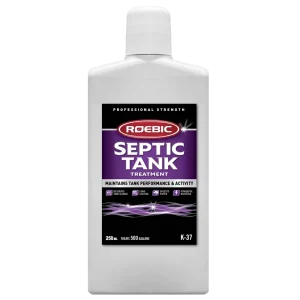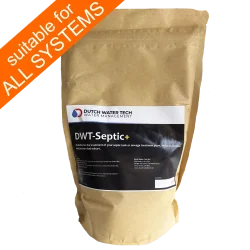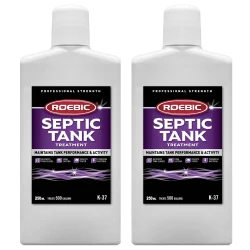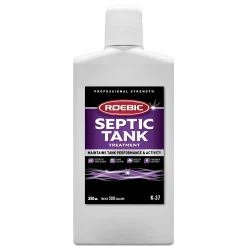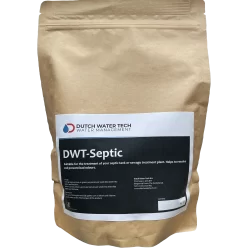Septic Tank Emptying
Read how you can reduce the number of times it has to be emptied.
A septic tank or home sewage treatment system is used for the treatment of waste water in non-irrigated areas. This tank is nothing more than a tank with a number of bulkheads. In the tank a limited amount of degradation takes place, where the micro-organisms break down organic matter. This mainly takes place anaerobically,so it is without any oxygen, and this process is slower than the aerobic decomposition. However, part of the supply will not decompose, resulting in a thick layer of sludge over time. Various substances can also cause the septic tank to not operate as efficiently. As a result, your septic tank fills up more quickly. In this case, it is important to empty your septic tank on a regular basis. The drains will often run a little less or there will be more odour nuisance.
When do I have to empty my septic tank?
There are a number of indicators that the septic tank or cesspool is filling up:
- The toilet or shower is not draining properly anymore.
- The tank gives a lot of odour nuisance.
- The water that is discharged is very dirty and can contain toilet paper.
Of course, when the septic tank is full, it should be emptied. The tank is then emptied with a suction car.
Do you want to empty your septic tank less often? It is possible!
There are also products for sale that make the septic tank less likely to become full by optimising the microbiological breakdown. This reduces the stench and the frequency of emptying. Bacterial products like Roebic K37 and Bio-Septic ensure that the breakdown of organic material is as high as possible. Using these products has a number of advantages:
- The septic tank fills up less quickly.
- Minimal to no odour development.
- The discharge is cleaner, which is better for the environment.
- Also works very well to restart the septic tank after emptying!
Emptying a septic tank, how does it work?
When the septic tank is full it is a good idea to empty it. There are several companies specialised in emptying septic tanks, farmers can often help you as well. But how does emptying the septic tank work? When you call in a specialised company, they will often send you a suction truck. It is a vacuum sweeper that is a specially equipped vehicle which is often used during in cleaning. The vacuum sweeper is equipped with a high-capacity pump that can be used to empty storage tanks and sewers. The suction trolley is stored in the storage tank on the truck.
The vacuum sweeper usually works with hoses up to about 100 metres away. The closer the vacuum sweeper can get to your septic tank, the easier it is for both parties. When the vacuum sweeper is ready, the manhole covers on the septic tank will be opened and the tank will be emptied through the manholes. Water should always be left in the well to prevent odour and to ensure it continues properly. If the emptying of your septic tank is done by a specialised company, you can be confident that the rubbish that has been sucked away will be disposed of responsibly. For excrement, the contents of the cesspool cannot be used as it contains germs and pathogenic bacteria.
When the septic tank has been emptied and activated again, it is advised to restart the bacterial culture. As a result, the decomposition will be optimised and doesn’t need to be emptied as frequently as before. Our septic tank activator is a great product for this.
A typical vacuum sweeper has the following specifications:
- Length: 11 metres
- Width: 2.5 metres
- Height: 4 metres
- Suction depth: +/- 20 metres
- Suction distance: +/- 100 metres
- Weight: 40 tons
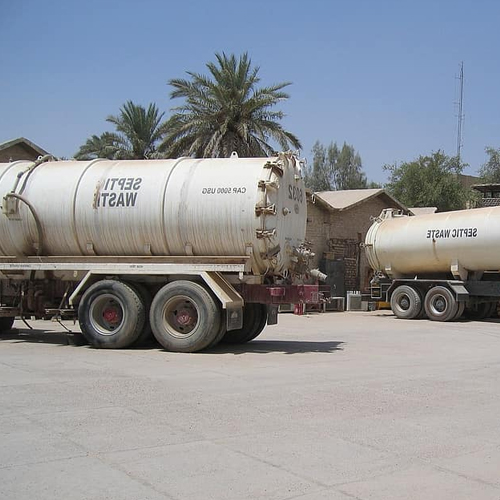
Important!
Entering the septic tank or cesspool is very dangerous, because of this, people regularly die! They are intoxicated by the poisonous gases and drown or suffocate. Just airing the tank is not enough; as some gases are heavier than air. Don’t stick your head in the manholes either. Always ask a professional for help and to first measure the concentration of harmful gases as, some of are odourless at high concentrations. The toxic H2s is an example of this.
Our recommended products for septic tanks
-
DWT-Septic Plus – Septic Tank Bacteria – 1kg
Cesspool Bacteria Treatment £57.45 £47.88 (excl. VAT) Add to basket -
Septic Tank Bacteria Booster | Concentrated Formula
Septic tank bacteria £51.45 £42.88 (excl. VAT) Add to basket -
Roebic K37 Septic Tank Treatment | Concentrated Formula
Septic tank bacteria £27.95 £23.29 (excl. VAT) Add to basket -
DWT-Septic – Septic Tank Additives – 1kg
Cesspool Bacteria Treatment £46.95 £39.13 (excl. VAT) Add to basket


